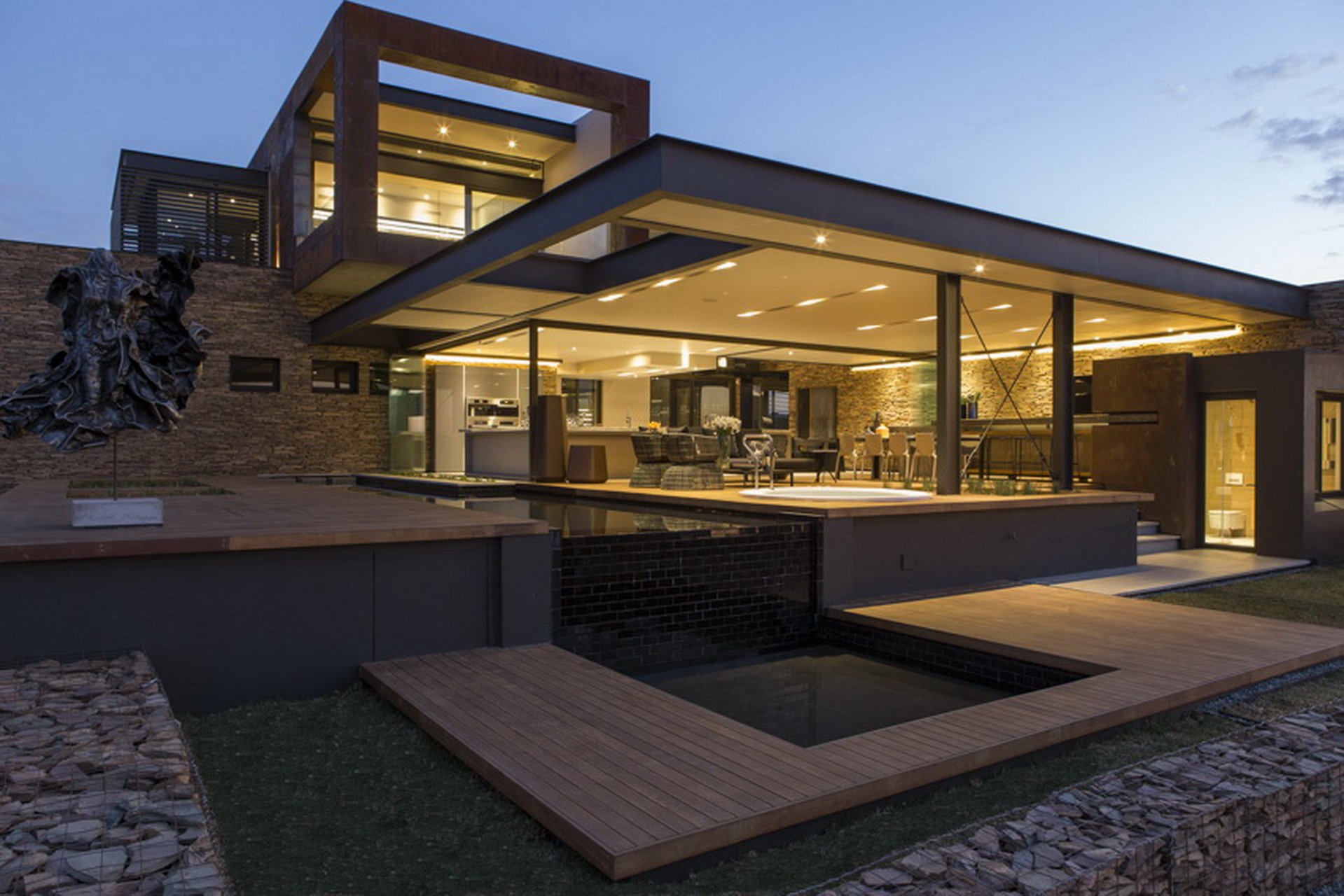NICO VAN DER MEULEN ARCHITECTS
MODERN HOUSE ARCHITECTURE

Modern House Architecture
Most people confuse “Modern” and “Contemporary” architecture and reference contemporary architecture when they talk of modern house architecture.
Unlike modern architecture, which is defined as the building style during the early to mid-twentieth century, Contemporary architecture refers to present-day building styles.
Because today’s architecture styles are varied, it is difficult to come up with a formal or precise definition of modern/contemporary architecture.
Some people viewed the elements that characterized modern architecture as too cold and impersonal. This led to the creation of the contemporary style as is recognized today.
Like the modern style, contemporary buildings connect indoor and outdoor spaces, and does not copy traditional styles, but it adds personal touches and warmth throughout the living space. The use of natural light also plays a big role, so large and expansive windows are a common and easily recognized feature of modern house architecture.

Contemporary/ modern architecture takes many forms, but at Nico van der Meulen Architects one of the cornerstones is functionality, which also incorporates sustainable design and adapting the building to the local climate. Where the climate allows most rooms are fitted with either frameless folding doors or sliding doors for indoor/outdoor living.
Some of the most important factors in these modern/contemporary designs is the orientation of the building and sun control. In certain areas, buildings are designed to never let direct sunlight into the building due to very hot climates, whereas in other places roof overhangs are carefully designed to let in calculated amounts of sunlight during winter.

On the Sandton Residence, Nico van der Meulen Architects used folding perforated screens on the fully glazed east and north side to limit heat gain during summer, which can be folded away during winter to let in the sun.
“Form follows function”, “The house is a machine for living in” and “Truth to materials” were the cornerstones of the modern movement, and are still to a large extent adhered to by contemporary architects.

East and west facing windows are also limited in hot climates, while in the colder climates such as the South African Highveld, south facing windows can lead to serious heat-loss during the cold months.
Other important factors in designing a modern/contemporary building in various countries are local traditions and preferences, such as open plan living vs formal lounges/dining rooms, garages and staff accommodation.
Materials also play a big role in contemporary architecture, with large expanses of glass, exposed concrete, steel, stone and wood involved. Deviating from the total minimalism and absence of ornamentation on modern buildings, where all walls were plastered and painted white, texture is used for a more tactile environment.
As can be seen in the images below, texture is very important to us, both external and interior. On the exterior, we often use rusted steel (Cor-Ten or similar), exposed concrete, stone cladding or different types of tiles.
Another element in our designs is dramatic lighting, both as feature lighting to highlight elements and for general lighting.






